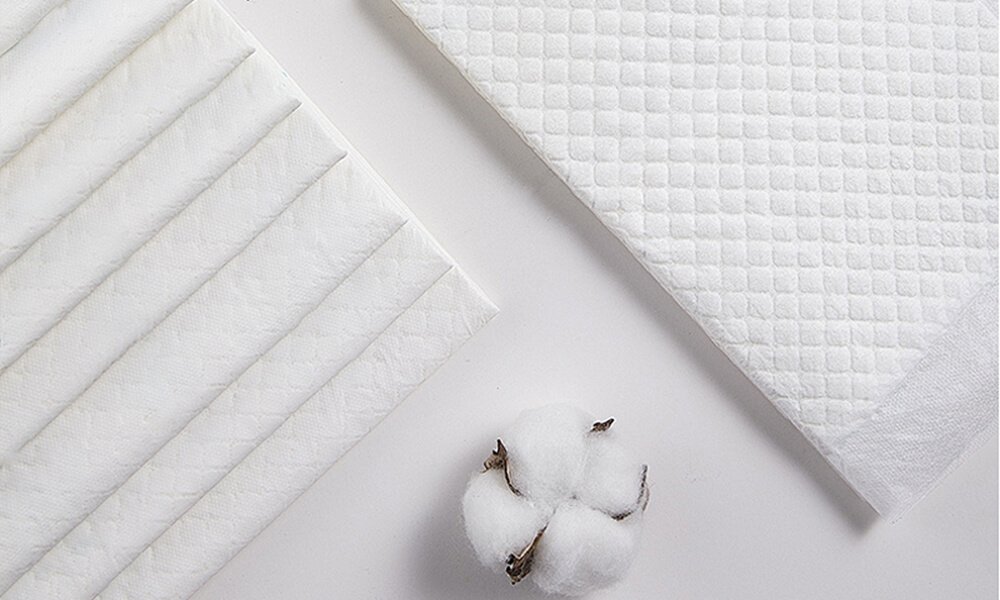Índice
Introdução ao Almofada de cama descartável Indústria
Importância no sector da saúde
As almofadas de cama descartáveis tornaram-se indispensáveis nas instalações de cuidados de saúde, fornecendo apoio essencial aos doentes com várias condições médicas. São importantes para manter a higiene e o conforto dos doentes, especialmente na gestão da incontinência. O envelhecimento crescente da população e a prevalência de condições médicas que exigem tais cuidados impulsionaram significativamente a procura de resguardos de cama descartáveis. São fundamentais no controlo de infecções e na manutenção da dignidade do doente, o que as torna vitais para os serviços de saúde.
Panorama do crescimento e do potencial do mercado
A indústria de resguardos de cama descartáveis está a registar um crescimento robusto, impulsionado pela expansão do sector dos cuidados de saúde em todo o mundo. Este aumento da procura é evidente não só nos mercados estabelecidos, mas também nas economias emergentes, onde os padrões de saúde estão a melhorar progressivamente. A indústria também beneficia dos avanços tecnológicos nos materiais e processos de fabrico, aumentando a eficiência e a relação custo-eficácia. A crescente consciencialização das necessidades de higiene e cuidados de saúde posiciona este segmento de mercado para um crescimento futuro substancial e oportunidades de investimento.
Evolução das almofadas de cama: Do pano ao descartável
Perspetiva histórica
A transição dos tradicionais pensos de pano para os pensos de cama descartáveis marca uma evolução significativa nos cuidados de saúde e higiene. Os pensos de pano, que exigiam uma lavagem regular, eram menos eficientes em termos de absorção e controlo de odores. A mudança para os descartáveis representa um avanço crítico nos cuidados de saúde, impulsionado pela necessidade de soluções mais higiénicas, convenientes e eficazes.
Avanços que conduziram aos descartáveis
Os avanços na ciência dos materiais e nas tecnologias de fabrico aceleraram a transição para os resguardos de cama descartáveis. A introdução de polímeros superabsorventes e melhorias nos tecidos não tecidos transformaram a indústria, resultando em produtos que oferecem uma absorção superior, são leves e aumentam o conforto do doente.
Insights sobre materiais: Componentes dos pensos de cama descartáveis
Análise dos materiais utilizados
Os resguardos de cama descartáveis são normalmente constituídos por várias camadas concebidas para uma função específica. A camada superior é um tecido macio, não tecido, para conforto e rápida absorção de fluidos. O núcleo contém polímeros superabsorventes dentro da polpa de cotão, proporcionando uma absorção eficaz. A camada inferior é normalmente impermeável, impedindo a fuga de fluidos e protegendo a roupa de cama e o mobiliário.
Papel dos polímeros superabsorventes
Polímeros superabsorventes (SAPs) estão no centro dos pensos de cama descartáveis e são responsáveis pela sua excecional capacidade de absorção. Estes polímeros podem absorver várias vezes o seu peso em líquido, convertendo-o num gel e evitando fugas. Esta caraterística é fundamental para a funcionalidade dos pensos, oferecendo uma experiência de utilização seca e confortável e impulsionando a investigação e o desenvolvimento contínuos na indústria.
Processo de fabrico: Um guia passo-a-passo
Descrição pormenorizada das fases de produção
O processo de fabrico de resguardos de cama descartáveis envolve várias fases fundamentais. Começa com a preparação de matérias-primas como os tecidos não tecidos e a polpa fluff combinados com polímeros superabsorventes. Estas camadas são depois ligadas entre si através de métodos de ligação térmica ou ultra-sónica para formar uma estrutura coesa. As etapas finais envolvem o corte das almofadas à medida, a embalagem e a preparação para a distribuição.
Integração da tecnologia no fabrico
O processo de fabrico de resguardos de cama descartáveis incorpora fortemente a tecnologia para garantir a eficiência e a qualidade. A automatização e a maquinaria avançada garantem uma qualidade consistente do produto, enquanto a tecnologia ajuda no controlo de qualidade, detectando e corrigindo defeitos. Esta integração tecnológica aumenta a capacidade de produção e garante que os resguardos cumprem as rigorosas normas exigidas em ambientes de cuidados de saúde.
Inovações no design das almofadas para camas
Melhorias recentes na conceção
A inovação contínua é uma caraterística da indústria de resguardos de cama descartáveis. Os desenvolvimentos recentes incluem pensos mais finos e mais absorventes com caraterísticas adicionais como o controlo de odores e indicadores de humidade. Estas inovações melhoram o desempenho do produto e aumentam o conforto do utilizador e a facilidade de utilização.
Impacto na experiência e funcionalidade do utilizador
Os avanços no design dos resguardos de cama melhoram significativamente a experiência do utilizador. A absorção e o controlo de odores melhorados proporcionam maior conforto e dignidade, especialmente para utilizadores com problemas de incontinência. Caraterísticas como os indicadores de humidade ajudam os prestadores de cuidados de saúde a mudar atempadamente os resguardos, melhorando os cuidados ao doente e reduzindo as complicações relacionadas com a pele.
Garantia de qualidade no fabrico
Medidas de controlo da qualidade
No fabrico de resguardos de cama descartáveis, a garantia de qualidade é fundamental, dada a sua aplicação nos cuidados de saúde. Os fabricantes utilizam medidas rigorosas de controlo de qualidade ao longo da produção, testando a absorção, a durabilidade e a compatibilidade com a pele. Um controlo de qualidade consistente é crucial para garantir que cada lote de resguardos de cama cumpre as normas de segurança e desempenho exigidas.
Importância de manter os padrões da indústria
O cumprimento das normas da indústria é crucial para os fabricantes de colchões de cama descartáveis. Estas normas, definidas por organismos reguladores e instituições de cuidados de saúde, garantem a segurança e a eficácia dos produtos. A adesão a estas normas protege os utilizadores e reforça a credibilidade e a reputação dos fabricantes no mercado da saúde.
Considerações ambientais e esforços de sustentabilidade
Impacto ambiental dos pensos de cama descartáveis
A pegada ambiental dos resguardos de cama descartáveis, nomeadamente em termos de produção de resíduos e consumo de recursos, é uma preocupação significativa. Como artigos de utilização única, contribuem para os resíduos hospitalares e a sua produção requer recursos substanciais como a água e a energia.
Práticas sustentáveis na indústria
Em resposta aos desafios ambientais, a indústria está a adotar práticas sustentáveis. Os esforços incluem:
- Utilização de materiais reciclados e biodegradáveis.
- Otimização dos processos de produção para reduzir os resíduos e a utilização de energia.
- Implementação de iniciativas de reciclagem.
Estas práticas minimizam o impacto ambiental e estão em conformidade com a crescente procura de produtos de saúde sustentáveis por parte dos consumidores.
Dinâmica do mercado: Tendências e Comportamento do Consumidor
Análise das tendências actuais
São várias as tendências que moldam o mercado dos resguardos de cama descartáveis, incluindo a crescente atenção aos cuidados de saúde ao domicílio e o aumento das despesas com os cuidados de saúde. Há uma preferência crescente por produtos que ofereçam maior conforto e conveniência, estimulando o design do produto e as inovações de materiais.
Compreender as necessidades e preferências dos consumidores
Para os fabricantes, é vital compreender as necessidades e preferências dos consumidores. Isto implica satisfazer os diversos requisitos de diferentes grupos de utilizadores, como os idosos, os doentes pós-operatórios e os cuidados de maternidade. O equilíbrio entre funcionalidade, conforto e acessibilidade é fundamental para satisfazer eficazmente estas necessidades variadas.
Cenário regulamentar global e conformidade
Visão geral dos regulamentos em diferentes países
O panorama regulamentar dos resguardos de cama descartáveis varia a nível mundial, com diferentes normas de segurança, desempenho e rotulagem. Os fabricantes têm de navegar por estes regulamentos para garantir a conformidade, especialmente nos mercados internacionais.
Desafios da conformidade em mercados diversificados
A conformidade em mercados variados apresenta desafios, exigindo o cumprimento de normas específicas de material, produção e embalagem. O incumprimento acarreta o risco de sanções e danos na reputação da marca, o que exige um investimento em conhecimentos regulamentares e estratégias de conformidade.
Desafios e oportunidades na indústria transformadora
Exploração dos actuais desafios da indústria
O sector enfrenta desafios como a pressão dos custos, a concorrência e a necessidade de inovação contínua. Os fabricantes também se debatem com preocupações ambientais e ambientes regulamentares complexos, que afectam a produção e o acesso ao mercado.
Oportunidades de crescimento e inovação
Apesar destes desafios, as oportunidades de crescimento e inovação são abundantes. O desenvolvimento de novos materiais e designs, a entrada em mercados emergentes e o aproveitamento da tecnologia para melhorar o fabrico são fundamentais. As colaborações e parcerias também apresentam novas possibilidades de desenvolvimento e expansão do mercado.
Avanços tecnológicos e perspectivas futuras
Tecnologias emergentes na indústria transformadora
Os avanços tecnológicos estão a definir o futuro do fabrico de resguardos de cama descartáveis. Os materiais avançados, a automatização e a análise de dados melhoram a eficiência e a qualidade da produção. As inovações em materiais biodegradáveis e inteligentes oferecem perspectivas interessantes para o desenvolvimento de produtos.
Previsões para o futuro do sector
O sector dos resguardos de cama descartáveis está prestes a sofrer transformações significativas. Os contínuos avanços tecnológicos, a crescente consciência ambiental e a evolução das necessidades de cuidados de saúde irão moldar o futuro do sector. A ênfase na sustentabilidade, no conforto do utilizador e na conformidade regulamentar continuará a impulsionar a inovação e o crescimento do mercado.

